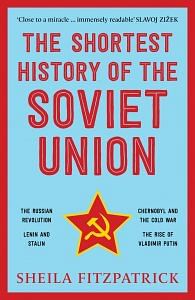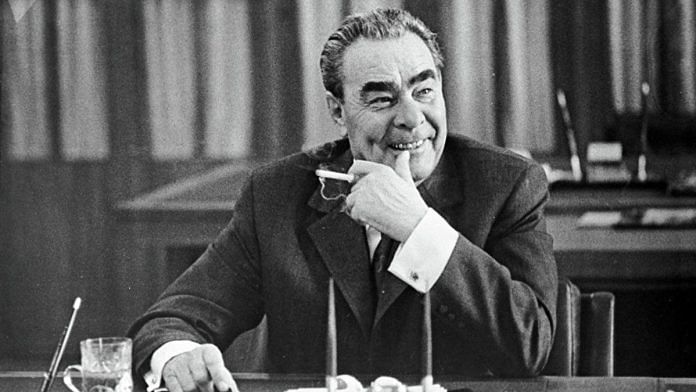The Brezhnev era may have been the best of Soviet times or the most boring, depending on your point of view. But nobody has ever said it was the worst of times, and the Soviet leaders had many causes for satisfaction, particularly in the 1970s before the impact of stalling economic growth rates hit home. This was the period in which the Soviet Union first achieved military parity with the United States and competed with it as an equal for influence in the Third World. It had become a major oil producer, and the price of oil on the international market doubled in the second half of the 1970s, much to the Soviet Union’s advantage. The Soviet GNP continued to rise, both absolutely and in relation to other powers, coming the closest it was ever to come to that of the United States in the early 1970s (it was still little more than a third of the US GNP, but in 1946 it had been only a fifth).
Two-thirds of the population were living in towns and cities by the 1980s, compared to a third on the eve of the war. There was no worry about unemployment, and housing rents and prices on basic food goods were kept low. Thanks to the apartment building program started under Khrushchev, the proportion of Soviet families living in separate apartments with their own bathrooms almost doubled in a decade. All the indices of consumer welfare rose: if at the beginning of the 1970s, one in every two families had a TV set and one in every three a refrigerator, by the end of the 1980s there was one of each per family. Private cars – frowned on by Khrushchev – were becoming available, if only for the lucky few.
Most rural as well as urban children were now getting a secondary education, while the proportion of the population with higher education more than doubled in the Brezhnev period, reaching just under 10 per cent.
Since the opening of the Soviet borders to tourism abroad in the mid-1950s, hundreds of thousands of Soviet citizens had had a chance to fall in love with Paris, or at least Prague. Life became easier for all groups of the population, particularly in the towns, not only because material circumstances were improving but also because the regime had abandoned the use of random terror and used even targeted measures of repression sparingly.
Also read:
But this rosy picture needs qualification. The Brezhnev era was not all of a piece, and it was the first decade – the mid-1960s to the mid-1970s – that was the high point. After that it went downhill, particularly with regard to the economy. According to CIA estimates, the growth rate of the Soviet GNP dropped from almost 5 per cent annually in the 1960s to 2–3 percent in the 1970s and under 2 per cent in the 1980s.
High oil prices helped to disguise the problem, but oil prices do not stay high forever. Rising living standards in the 1960s and early ’70s generated expectations that rose even faster, encouraged by greater acquaintance with the conditions of life in the West; the result was growing consumer disappointment.
Alcoholism, always a problem in the Soviet Union, rose alarmingly, with binge drinking and increased consumption of dubious home brews contributing to a doubling of the number of deaths from alcohol poisoning in the 1970s. Disturbingly, male life expectancy, which had risen steadily through the Soviet period, started to fall in the mid-1960s, primarily as the result of male alcoholism (women’s life expectancy was not affected). It was down from sixty-four in 1965 to sixty-one in 1980, while in the United States over the same period, male life expectancy rose from sixty-seven to seventy.
Even the successes sometimes had their downsides. All that educational expansion had produced a generational gap of potentially worrying dimensions: by the end of the 1980s, over 90 per cent of people in their twenties had a secondary or higher education, as compared with under 40 per cent of those in their fifties – but it was the latter who were running the country.
When US academics compared the results of an interview project with 1970s émigrés with those of the postwar Harvard Interview Project, conducted in the late 1940s, they found that younger interviewees in the 1970s showed less identification with the Soviet Union than their elders did. What their elders welcomed as stability might have seemed more like ‘petrification’ (to use the term popular with some Western scholars at the time) or ‘stagnation’ (Mikhail Gorbachev’s later characterisation) to the young. ‘There in the cemetery it’s so peaceful . . . everything cultured and decent . . . such a blessing’ was the ironical refrain of a song (‘Na kladbishche’) sung at informal gatherings by the guitar bards of the era.
Also read:
The Economy
The biggest long-term problem was the economic system. Central planning, output targets and strong administrative centralisation had worked well as a way of jump-starting a developing economy in the 1930s. They had performed excellently as a framework for the wartime economy in the 1940s and had done a good job of rebuilding industry and infrastructure after the war.
But they were proving much less suitable for the kind of complex modern economy the Soviet Union needed from the 1960s. The Soviet system proved inhospitable to innovation, and as the pace of technological change in the world sped up, it started to lag behind. Foreign technology imports – one example being the 1966 contract with Fiat to build an auto plant in Togliatti on the Volga – only partially filled the gap.
Efficiency varied sharply between industrial sectors, with the military and space industries at the top. The productivity of capital investment in industry was very low by world standards, and the productivity of labour even worse, both in industry and agriculture. Agricultural output grew in the first decade after 1964 but then went into slightly negative territory, and productivity was low both in the collective farms and in the state farms, where workers received a wage. A partial shift away from the collective farm model and towards large-scale state farms, exemplified in Khrushchev’s Virgin Lands program in Kazakhstan, increased the sown area but failed to solve the productivity problem.
 This excerpt from Sheila Fitzpatrick’s ‘The Shortest History of the Soviet Union’ has been published with permission from Pan Macmillan India.
This excerpt from Sheila Fitzpatrick’s ‘The Shortest History of the Soviet Union’ has been published with permission from Pan Macmillan India.






